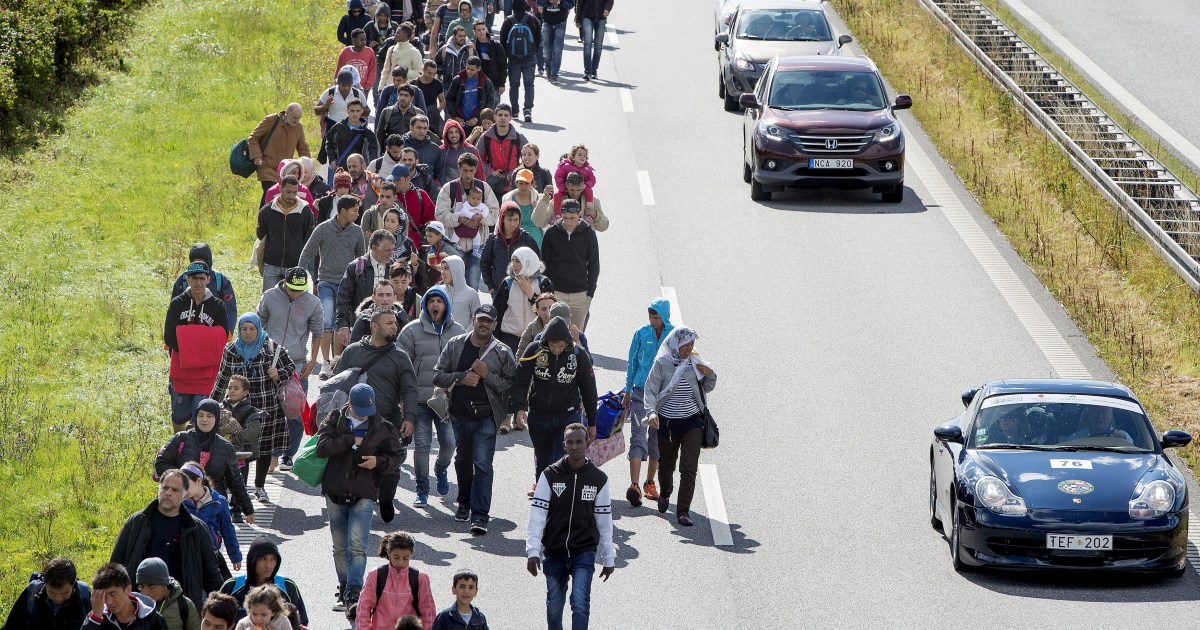Mid-1951 the United Nations adopted the "Convention relating to the Status of Refugees", which entered into force in 1954. This convention is generally known as the "Refugee Convention", and provided a set of guiding principles on the treatment of people fleeing persecution, but is the definition of refugees still the same? 70 years since the agreement?
The British Economist newspaper said in a report that the size of the human losses caused by the First and Second World Wars prompted governments to put in place international laws to protect refugees fleeing from conflict areas, but things are now very different, which raises many questions. Questions about the exact definition of a refugee, and the protection he is entitled to under international law.
Refugee Convention
The definition of a refugee was first defined 100 years ago. In 1921, the League of Nations formed a High Commission for Refugees to help millions of people who had become stateless after World War I. After World War II, Europe faced a refugee crisis more dangerous than it experienced in World War I.
Article 14 of the Universal Declaration of Human Rights - which was signed at the United Nations in 1948 - obligated the countries of the world to protect refugees, but it was the 1951 Refugee Convention that outlined that protection, and the first version of the agreement was limited to refugees as a result of the events that occurred in Europe before 1951.
In 1967, the Protocol Relating to the Status of Refugees extended protection to refugees from outside the European continent, extending its validity beyond 1951. Between 1975 and 1989, proxy wars during the Cold War displaced millions, doubling the number of refugees in worldwide about 5 times, and the number has continued to increase since then.
The United Nations High Commissioner for Refugees - which was set up to monitor compliance of signatories to the convention - estimates that the number of refugees in the world reached about 26.4 million people by the end of 2020 (20.7 million people under the mandate of the United Nations High Commissioner for Refugees, and 5.7 million Palestinian refugees). .
In addition to this number, about 56 million people have been forced to flee their areas around the world, including millions of internally displaced persons.
The UN Convention defines a refugee as “a person who is unable or unwilling to return to his or her country of origin because of a well-founded fear of persecution for reasons of race, religion, nationality, membership of a particular social group or political orientation.”
The basic principle of refugee protection under the Convention is "non-refoulement", that is, the prohibition of returning people to countries where they face a "real" threat of persecution.
The agreement calls on the countries of the world not to punish refugees who have entered their borders illegally, if they arrive "directly" from the place where they were threatened.
The Convention also defends the rights of refugees to work, housing and education in the countries to which they have fled.
The need for a new definition
Over the years, courts in various countries of the world have expanded their interpretation of the Convention.
For example, some have recognized that persecution of women because of their gender is a reason for them to be recognized as refugees, and that illegal entry into the country should not prevent asylum seekers from staying even if they pass through a third country.
The newspaper stresses that the rights granted by the agreement to refugees are supported by other human rights treaties, such as the United Nations Convention against Torture, but that many people who have been forced to leave their homes are not covered by the provisions of the agreement.
For example, millions of people fleeing natural disasters are excluded from enjoying the protections provided.
Since climate change threatens all societies without exception, some experts argue that "climate change migrants" deserve international protection, just like other refugees.
But the idea of broadening the definition of refugees to this extent does not have much political support internationally, according to The Economist.
Over the past years, the rise in the number of asylum seekers in Europe and the United States has led to a violent reaction against the provisions of the Refugee Convention.
Seventy years after the conclusion of the agreement, the number of refugees globally is still rising, and the level of risk leading to asylum has increased in a way that the framers of the agreement were unimaginable 70 years ago.

